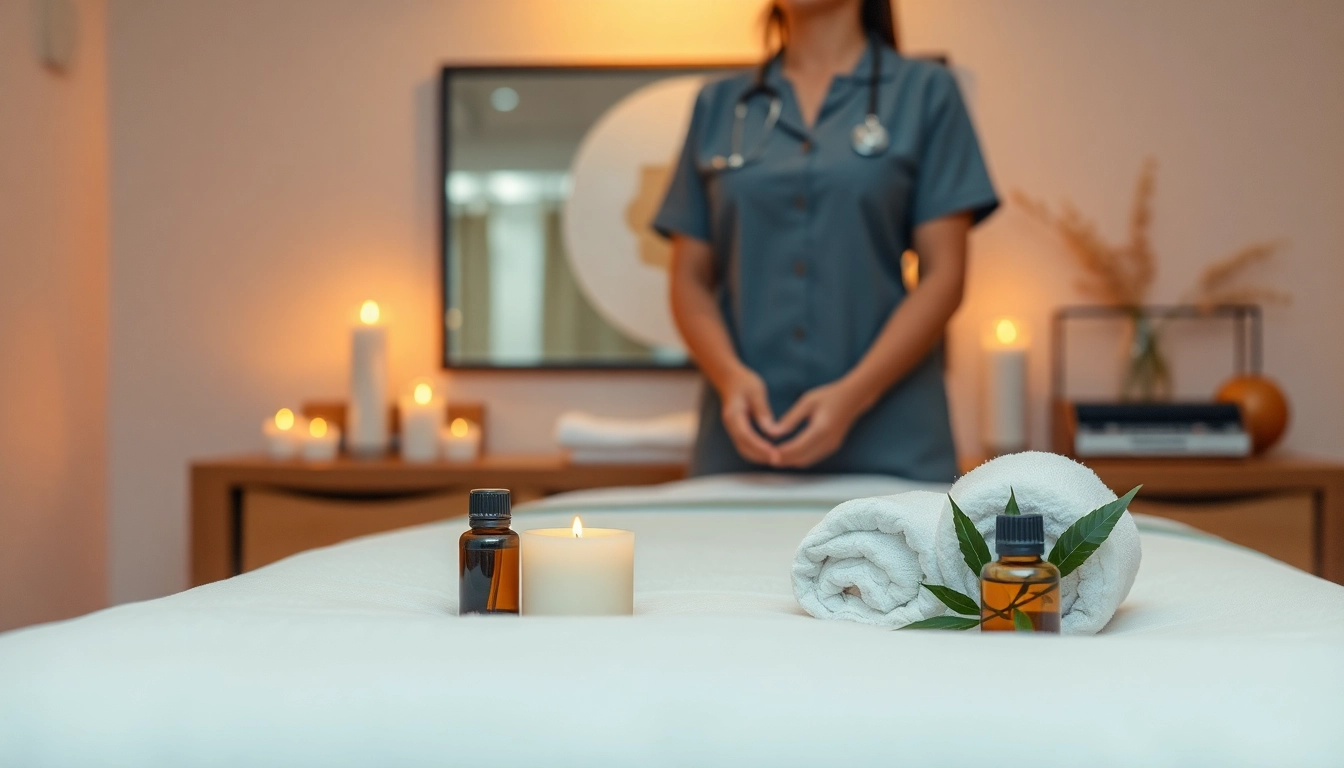Understanding Anxiety: What It Is and How It Affects You
Defining Anxiety Disorders
Anxiety is more than just feeling a little stressed or worried; it can manifest as a significant mental health challenge, impacting daily life and emotional well-being. Anxiety disorders can be classified as chronic conditions that create a constant sense of fear, apprehension, or worry. These disorders can vary widely in their symptoms, severity, and the situations or events that trigger them.
Dealing with anxiety often involves understanding the different types of anxiety disorders, which will help in recognizing personal experiences with anxiety. Cognitive Behavioral Therapy (CBT), medication, and self-care strategies have become essential components in managing anxiety disorders effectively. Nevertheless, many individuals might find themselves grappling with the fundamental aspects of anxiety long before they choose to seek help.
Common Symptoms and Their Impact
The symptoms of anxiety can be both physical and emotional. Physical symptoms may include a racing heart, rapid breathing, sweating, trembling, dizziness, fatigue, and gastrointestinal issues. Emotional symptoms encompass feelings of restlessness, irritability, and overwhelming worry. Such symptoms can create a cycle of distress that not only affects mental health but can also interfere with relationships, work performance, and overall quality of life.
For instance, an individual who experiences social anxiety disorder may struggle with attending social gatherings, fearing judgment or embarrassment. As a result, they might isolate themselves, leading to loneliness and exacerbating their anxiety. Understanding these symptoms is crucial in identifying when professional help is needed and in recognizing what coping mechanisms might be effective.
Types of Anxiety Disorders: An Overview
There are several types of anxiety disorders, each with distinct characteristics. The most common include:
- Generalized Anxiety Disorder (GAD): Characterized by excessive uncontrollable worry about various aspects of daily life.
- Social Anxiety Disorder: A fear of social interactions and situations that may lead to embarrassment.
- Panic Disorder: Involves recurring episodes of panic attacks, marked by sudden feelings of terror or impending doom.
- Specific Phobias: An excessive and irrational fear of a particular object or situation.
- Obsessive-Compulsive Disorder (OCD): Characterized by unwanted repetitive thoughts (obsessions) and behaviors (compulsions).
- Post-Traumatic Stress Disorder (PTSD): Arises after experiencing or witnessing a traumatic event, leading to persistent distress.
Understanding your specific anxiety disorder can facilitate targeted techniques and strategies for managing those symptoms, enhancing self-awareness, and promoting mental health.
Practical Techniques for Dealing with Anxiety
Relaxation Techniques: Breathing and Meditation
Relaxation techniques are a crucial part of managing anxiety. Breathing exercises can significantly alleviate symptoms of anxiety, inducing a state of calmness. Deep breathing, where individuals consciously breathe in for four counts, hold for four counts, and breathe out for six counts, serves as a practical exercise to control anxiety in moments of stress.
Meditation operates from a similar standpoint, allowing individuals to clear their thoughts and focus on the present moment. Mindfulness meditation encourages practitioners to observe their thoughts without judgment, helping reduce stress and anxiety over time. Using guided meditation or mobile applications can assist beginners in establishing a consistent practice.
Physical Activity: The Role of Exercise
Physical activity plays a pivotal role in alleviating anxiety symptoms. Regular exercise can enhance mood by releasing endorphins, which are chemicals in the brain that act as natural painkillers and mood elevators. Engaging in aerobic exercises, such as jogging, swimming, or even brisk walking, can significantly contribute to managing anxiety levels. Recommendations suggest at least 150 minutes of moderate-intensity exercise weekly to reap these benefits.
Moreover, incorporating practices like yoga can also be advantageous. Yoga combines physical movement, meditation, and breathing exercises, promoting a holistic approach to mental wellness. Additionally, the structure and discipline of a consistent exercise routine can help establish a sense of control, further empowering individuals in their journey of dealing with anxiety.
Mindfulness Practices for Daily Life
Integrating mindfulness into your daily routine can significantly contribute to effectively managing anxiety. Mindfulness is about being fully present, allowing individuals to break the cycle of chronic worry and stress. It can be as simple as taking a few moments in a day to focus on the sensation of your feet on the ground or the taste of your food, creating a bond with the present moment.
Additional mindfulness practices include progressive muscle relaxation, where individuals tense and relax different muscle groups while focusing on their sensations, and keeping a gratitude journal to shift focus from stressors to positive aspects of life. Such practices foster resilience, allowing individuals to approach anxiety with reduced fear and increased self-compassion.
Building a Support System When Dealing with Anxiety
Communicating with Friends and Family
Building a robust support system can significantly impact the management of anxiety. Friends and family often provide valuable emotional support, understanding, and validation that can make a significant difference in combating feelings of isolation commonly associated with anxiety disorders. Open communication regarding your feelings is crucial; sharing your experiences can lead to increased understanding and support from loved ones.
Furthermore, establishing established ‘check-in’ moments where you can openly discuss your feelings of anxiety can help normalize these conversations and promote built-in support during difficult times.
Seeking Professional Help
In some instances, professional help is essential for navigating the complexities of anxiety disorders. Psychologists and counselors can provide therapies suited to individual needs, including Cognitive Behavioral Therapy (CBT), which focuses on altering negative thought patterns that contribute to anxiety. Furthermore, a healthcare provider may recommend medications that can assist in stabilizing anxiety symptoms, either alone or in combination with therapy.
It’s vital to approach seeking help with an open mind, viewing it as a positive step towards managing your mental health effectively. This can often be the turning point for many in their journey toward stability and a better quality of life.
Utilizing Online Resources and Communities
In our digital age, numerous online resources are available for those dealing with anxiety. Various mental health organizations provide valuable information about anxiety, coping strategies, and forums where individuals can connect with others facing similar challenges. Online communities offer support, sharing success stories and effective management techniques that can empower individuals in their personal journeys.
Engaging in these platforms can help create a sense of community, reinforcing that one is not alone in their struggles. It also opens avenues for learning from others’ experiences, contributing to personal growth and understanding in managing anxiety.
Self-Care Tips for Managing Anxiety Effectively
Setting Healthy Boundaries
One of the first steps in managing anxiety is learning to set healthy boundaries. Overcommitting oneself can often lead to increased anxiety levels. It’s essential to prioritize tasks and know when to say no to requests that may contribute to an overwhelming schedule. This practice not only allocates time for self-care but also prevents burnout, a significant contributor to anxiety.
Establishing personal boundaries can also extend to relationships, ensuring they are healthy and reciprocal. This involves communicating openly with others about your needs and limits, which fosters healthier interactions and lessens anxiety-causing situations.
Developing a Routine
Creating a daily routine can immensely help in managing anxiety. Consistency provides a sense of normality and control that many individuals find comforting. A balanced routine includes a mix of productive tasks, self-care activities, and leisure pursuits. Balancing these components can help mitigate feelings of anxiety and maintain a structured sense of purpose.
Within that routine, incorporating time for self-care, such as reading, hobbies, or simply relaxing, is essential. Keeping an eye out for good sleep hygiene practices also falls into this routine development, as sleep is intimately linked with mental health.
Implementing Journaling as a Reflective Tool
Journaling provides a powerful reflective tool for managing anxiety. Writing down thoughts and feelings can help externalize emotional turmoil, offering clarity and helping to identify triggers that may exacerbate anxiety. Keeping a journal also encourages a habit of self-exploration, which can lead to breakthroughs in understanding personal feelings and fears.
Moreover, recording positive experiences daily can help in shifting focus from negatives to positives, fostering an outlook of hope and resilience amidst struggles. Over time, these reflections can reveal patterns in thoughts and behaviors, informing future management strategies and interventions.
Long-Term Strategies for Living with Anxiety
Continuing Therapy and Treatment Options
For many dealing with anxiety, ongoing therapy can provide essential guidance well beyond initial interventions. Regular check-ins with a therapist can help adjust strategies, providing a platform for exploring new experiences and emotions as they arise. The journey of managing anxiety might involve multiple phases; building strong communication with professionals ensures that treatment evolves alongside the individual’s needs.
Finding a therapy approach that resonates with you – whether CBT, exposure therapy, or mindfulness practices – can also yield substantial benefits for long-term management. It’s vital to view therapy as a resource rather than a one-time solution.
Identifying and Avoiding Triggers
A critical practice in managing anxiety is recognizing and avoiding triggers that provoke anxiety attacks or heightened worry. This involves mindfulness and analysis to determine specific scenarios, people, or environments that heighten distress levels. By documenting triggers in a journal, individuals can begin to see patterns and craft strategies for navigating or circumventing these anxiety-inducing situations.
Additionally, learning to respond constructively to triggers is essential. This involves reframing thoughts associated with these triggers, employing relaxation techniques, and establishing immediate coping strategies to help mitigate potential anxiety responses.
Practicing Patience: Accepting Your Journey
One of the most vital aspects of dealing with anxiety is recognizing the importance of patience and self-compassion. Accepting that managing anxiety is a journey filled with ups and downs can foster resilience and reduce feelings of frustration. Incorporating self-compassion into your practice allows you to acknowledge progress, however small, and encourages kinder self-talk.
Moreover, celebrating successes, whether it’s speaking up in a meeting or attending a social gathering you previously would have avoided, reinforces positive behavior and enhances motivation moving forward. Anxiety is multifaceted, but with time, self-care, and continued support, individuals can learn to navigate their paths toward wellness effectively.



